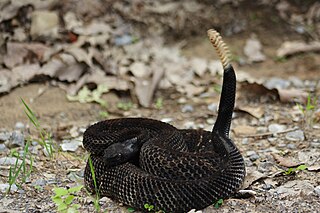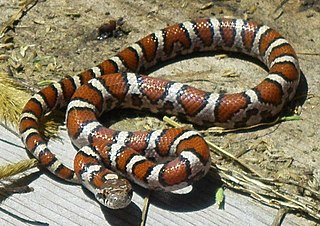Recently I reported on a study that documented declines of 50-90% in 17 populations of 8 snake species (please see article linked below). These findings brought to mind the global amphibian decline that was first uncovered in 1990. Since then, an emerging disease caused by the fungus Batrachochytrium dendrobatitis has likely caused the extinctions of over 100 frog species. Researchers seeking to avoid a similar crisis among the world’s snakes have now identified an emerging illness, Snake Fungal Disease, as cause for serious concern. Associated with a newly-described fungus, Chrysosporium ophiodiicola, the disease has been found in several species in 9 states (USA), but is likely much more widespread.
New Victims of a New Fungus
The global snake declines mentioned above first came to light in the late 1990’s, but explanations remain elusive. In 2008, herpetologists became alarmed when Eastern Massasaugas (or Swamp Rattlesnakes) in Illinois and Timber Rattlesnakes in New Hampshire showed evidence of an unusual fungal infection. A fungus (Chrysosporium sp.) that had previously been isolated from captive snakes, but never in the wild, was identified from head lesions on the Timber and Swamp Rattlesnakes. All of the snakes submitted for study expired.
In April of 2013, the USGS National Wildlife Health Center announced the discovery of a fungus new to science, Chrysosporium ophiodiicola. This fungus has been implicated in an emerging disease that is now afflicting snakes in the Eastern and Midwestern USA. Increasing numbers of snakes showing evidence of infection have been found by USGS biologists, who fear that the disease may devastate snake populations.
Is Snake Fungal Disease the “Next Chytrid”?
If the examples set by “Chytrid” (amphibians), White-Nose Syndrome (bats), and other emerging diseases hold true, the USA’s snakes may face a bleak future. Already, a 50% decline in one population of Timber Rattlesnakes has been credited to Snake Fungal Disease. Unfortunately, the lack of long term studies, and the difficulties involved in finding ill snakes, hinders efforts to understand the disease. In fact, it is not even known if Chrysosporium ophiodiicola actually causes Snake Fungal Disease. It is the only species that is always present on afflicted snakes, but other fungi sometimes occur as well.
Snake Fungal Disease has been documented in 9 states, including New York, Minnesota, Florida, New Jersey and Wisconsin, but is believed present but unidentified in others. In addition to the species mentioned earlier, Eastern Racers, Eastern Rat Snakes, Northern Water Snakes, Milk Snakes and Pygmy Rattlers have been infected. Symptoms of the disease include thickened skin, abnormal molts, subcutaneous nodules, ulcers, cloudy eyes (not associated with a molt), scabs or crusted skin, and swelling about the face.
Your Input and Observations Needed
The USGS is seeking input from those who keep snakes and observe them in the wild. As we know very little about Snake Fungal Disease and its possible effects on snake populations, I urge anyone who may have useful observations to please post a note below. I’ll then be able to advise you as to how best to proceed.
 That Reptile Blog – Reptile, Amphibian and Exotic Pet Care and Information
That Reptile Blog – Reptile, Amphibian and Exotic Pet Care and Information





That is really scary. Did it come from imported then released snakes or domestically bred and then released snakes
Hi,
Thanks for your interest, I hope all is well.
No real info available, but other than in Fla, introduced snakes are not much of a concern. Many of the emerging diseases we’ve seen in recent years, (chytrid, SARS, etc) seem to have alwys been around (chytrid found in frogs preserved 40+ yrs ago) but perhaps have mutated, or are taking advantage of immune systems weakened by environmental changes, etc., as sometimes occurs in humans. Some are found just because more researchers are out there, better technology etc; some misunderstood…ie frog deformities being the result of normal parasitic attack as opposed to pollution (but pesticides can cause probs as well., etc.Best, Frank
Hi Frank,
I recently photographed a rough green snake covered in blue subcutaneous nodules. It was sad to see such a beautiful snake afflicted this way. I’ve never seen anything like it. The first thing that came to mind was the fungal disease. I’d be happy to provide you with pictures. I do quite a bit of field helping here in NOVA and have had some great finds over the last several years. This fungal disease has got me worried.
Hi Matt,
Thanks for your input and concern. Studies of SFD are hampered by the fact that symptoms vary, and are also typical of many other diseases; as with Chytrid (amphibians), many previously undetected, but common, diseases will cloud the research. Although positive ID’s cannot be made via symptoms alone, the USGS is interested in photos and observations, especially from people such as yourself, who spend time in the field. Photos and further information, and instructions as to how to contact the USGS, are at the following links:
http://www.nwhc.usgs.gov/disease_information/other_diseases/snake_fungal_disease.jsp
http://www.nwhc.usgs.gov/information_desk/contact_form.jsp
Best regards, Frank
I will keep my eyes peeled way out West. Scary.
Hi Dan,
Pl keep me posted; USGS is interested in observations, photos, Best, Frank
Hi Frank,
I took your advice and reached out to the USGS. They put me in touch with a researcher at the University of Wisconsin who gave me the following reply after viewing my photos:
Thank you for sending along your observation and pictures. We cannot diagnose Snake Fungal Disease without having actual samples from the animal, but the signs on that snake do look consistent with the disease. In addition to the lumps on the animal’s body, it also looks like the lower jaw may be infected, which is common in many snakes with this disease. The other thing that I find very interesting is the color of the lesions on the body. The typical coloration in this species is the result of a mixture of yellow and blue pigments (there actually are no green pigments in the skin). When green snakes die, they turn blue because the yellow pigment deteriorates much more quickly than the blue pigment. I suspect that the skin in those infected areas is dying which is giving the lesions the blue coloration.
As far as the other snakes in the area are concerned, I would keep an eye out for additional cases. However, I would not be too alarmed just yet. We are finding that these infections are quite widespread, but may only be having impacts on populations under certain circumstances (we are currently studying this). We are not sure whether most snakes eventually overcome the infections or go on to develop more severe disease. It is good to know that the snake you observed was otherwise acting healthy. I have seen snakes with less severe infections acting lethargic.
If you encounter freshly dead snakes with signs of the disease (which I realize almost never happens), feel free to contact me and our lab may be able to test the animal. We can also sometimes test biopsies (if their collection is coordinated through the appropriate state agency and conducted by a veterinarian) and even shed skins if they contain signs of infection (the scabs or thickened areas of skin are usually obvious on the shed skins).
Thanks, matt…I’ll pass this along to others also
Sadly, I went to the same site yesterday and found another rough green snake that appeared to be suffering from a fungal infection. Posted the photos to your thread in AB. Hope you don’t mind.
Hi matt,
I’ll check them out soon, best, Frank
Various cold-blooded organisms – insects, amphibians, hibernating bats, platypuses, and now snakes seem to have a tendency to rot alive. Such diseases would be extremely rare in warmer animals, perhapse because their temperature is more constant and higher for most fungi to live, and the immune system can act more quickly.
Hello,
I’m not familiar with what you mention, but there is an enormous array of fungi and other micro-organisms adapted to warm blooded animals and tropical climates. Evolution is continual, and for ungi, often rapid. As an immune system becomes more effective at battling an attacker, the pathogen evolves ways around the defense. Best, Frank
Hi Frank,
I could not find the link to the study that you did. I am wondering if you sampled in Virginia at all and where the infection might have been detected.
Thanks!
~Meredith S.
Hello Meredith,
Thanks for your interest. Here is a link to the study (I did not work on this study) along with info re keeping up with developments, reporting suspected problems to the USGS etc. The USGS info does not mention Virginia, but snakes in nearby states have been identified as infected.
Please keep me posted, best, Frank
Hi Frank,
I wrote to you a few months ago regarding CANV, (Chrysosporium anamorph of Nannizziopsis vreissi), aka “Yellow Fungus Disease” in my Haitian Curlytail Lizards, (L. schreibersii). This was finally more or less isolated to an African violet plant that my females enjoyed for hiding and egg deposition. I used Sporanox and Terbinafine Hydrochloride Cream according to veterinary directions, and both lizards died within five days of each other. Clean up consisted of discarding all of the houseplants, using full-strength Betadine to kill the fungus, and steaming the areas after the Betadine was rinsed. (And later, a neutralizer for the Betadine due to the toxic odor; this is the Lizard Room that hell built). Follow up: Noticed the same symptoms in my Blue Spiny Lizard, (Sceloporus serrifer cyanogenys), around mid-June. Not wanting to deal with the toxicity of the Sporanox, I opted to treat him homeopathically with Phosphorus, (an anti-fungal remedy). He held his own, but his feeding was off, (when a Sceloporus does not eat, he is really sick; they are food machines!), and his two “yellow toes” remained swollen. Between the deaths of the two Curlytail Lizards, I’d gone online, and discovered a product called “Reptaid.” I pooh-poohed it at first, (there is a lot of garbage online), but decided to give it a try after seeing the terrible effects of the Sporanox. I followed the directions carefully, and in TWO weeks saw no more symptoms. It has been four weeks since his last dose, and there are just no symptoms anymore. He’s gone from 1.90 oz to 2.15 oz and really needs to shed…he’s getting so big. Without trying to advertise, I am a firm believer in the “Reptaid.” There is even a link pertaining to the treatment of CANV. Just another option for pet owners. By the way, may be purchasing another pair of the Curlytails from “That Fish Place, That Pet Place.” The Lizard Room is clean, the plants are new, and it’s a good habitat again. But first, another trip to Laredo in search of the elusive Blue Spiny female.
Thanks,
Bonnie Kreiser
Hi Frank,
Bonnie Kreiser here again. Leaving an update on the CANV, (Yellow Fungus Disease), and the Reptaid. My male Blue Spiny Lizard, (Sceloporus serrifer cyanogenys),still shows no symptoms of CANV. He’s fine, fit as a fiddle, and I did manage to get down to Laredo, Texas. Armed with a Texas Hunt Permit I caught him a fine lady on October the 12th. After quarantine, they had their first mating on Halloween. Both get the Reptaid on a monthly basis. It’s just a “management” dose. Two days, once a month is recommended. Not necessarily for CANV, (although it did eradicate the disease), but just as a prophylactic for reptile health. Just to let you know that the disease did not come back after the initial treatment.
Thanks,
Bonnie Kreiser
Hello Bonnie,
Thanks very much for taking the time to update me…great info to have, I’ll keep handy.
very glad to hear of your success, and looking forwd to more about one of my favorite lizards. A happy. hea;thy season and new year to you and yours, Frank